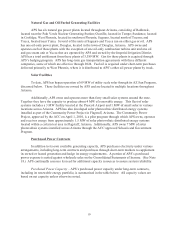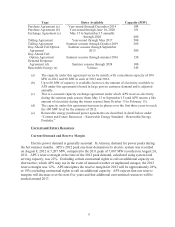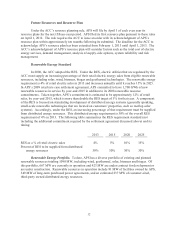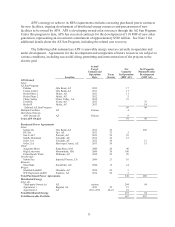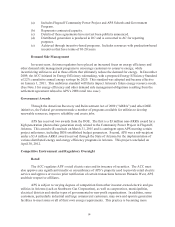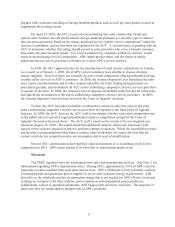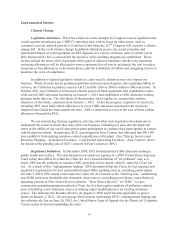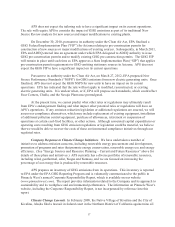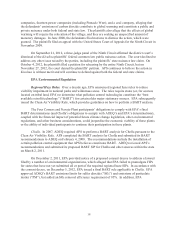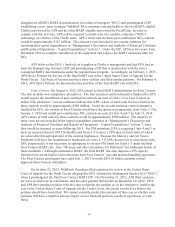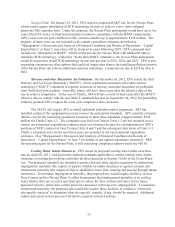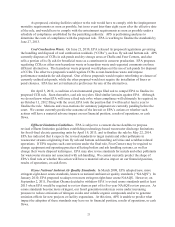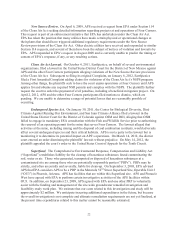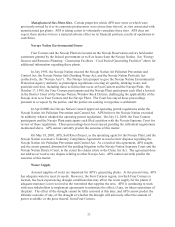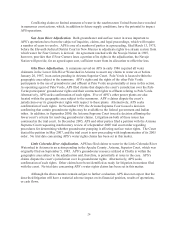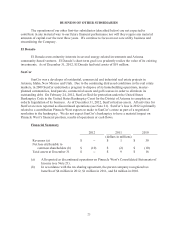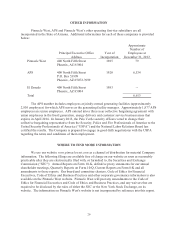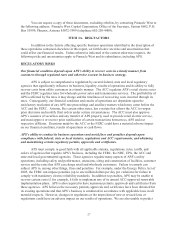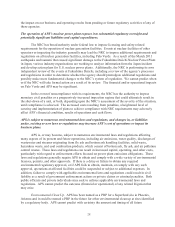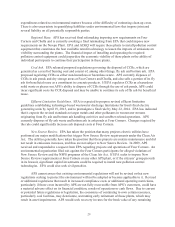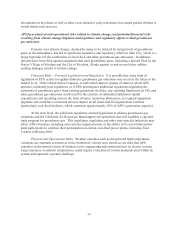APS 2012 Annual Report Download - page 44
Download and view the complete annual report
Please find page 44 of the 2012 APS annual report below. You can navigate through the pages in the report by either clicking on the pages listed below, or by using the keyword search tool below to find specific information within the annual report.20
Navajo Plant. On January 18, 2013, EPA issued a proposed BART rule for the Navajo Plant,
which would require installation of SCR technology in order to achieve a new, more stringent
plantwide NOx emission limit. Under the proposal, the Navajo Plant participants would have up to five
years after EPA issues its final determinations to achieve compliance with the BART requirements.
APS’s total costs for post-combustion NOx controls could be up to approximately $158 million. The
majority of these costs are not included in the capital expenditure estimates described in
“Management’s Discussion and Analysis of Financial Condition and Results of Operations – Capital
Expenditures” in Item 7, since they will be incurred in years following 2015. EPA’s proposal also
includes an “Alternative to BART,” which would provide the Navajo Plant with additional time to
install the SCR technology. Under this “better than BART” alternative, the Navajo Plant participants
would be required to install SCR technology on one unit per year in 2021, 2022 and 2023. EPA is also
requesting comments on other options that could set longer time frames for installing pollution controls
if the Navajo Plant can achieve additional emission reductions. Comments are due to EPA by May 6,
2013.
Mercury and other Hazardous Air Pollutants. On December 16, 2011, EPA issued the final
Mercury and Air Toxics Standards (“MATS”), which established maximum achievable control
technology (“MACT”) standards to regulate emissions of mercury and other hazardous air pollutants
from fossil-fired power plants. Generally, plants will have three years after the effective date of the
rule to achieve compliance. In the case of Cholla, APS will have a total of four years after the MATS’
effective date to comply with the new MACT standards because on September 24, 2012, the permitting
authority granted APS’s request for a one-year compliance date extension.
The MATS will require APS to install additional pollution control equipment. APS has
installed certain of the equipment necessary to meet the anticipated standards. APS currently estimates
that the cost for the remaining equipment necessary to meet these standards is approximately $124
million for Cholla Units 1-3. The estimated costs for Four Corners Units 1-3 are not included in our
current environmental expenditure estimates since our estimates assume the consummation of APS’s
purchase of SCE’s interest in Four Corners Units 4 and 5 and the subsequent shut down of Units 1-3.
Cholla’s estimated costs for the next three years are included in our environmental expenditure
estimates. (See “Management’s Discussion and Analysis of Financial Condition and Results of
Operations – Capital Expenditures” in Item 7 for details of our capital expenditure estimates). SRP,
the operating agent for the Navajo Plant, is still evaluating compliance options under the MATS.
Cooling Water Intake Structures. EPA issued its proposed cooling water intake structures
rule on April 20, 2011, which provides national standards applicable to certain cooling water intake
structures at existing power plants and other facilities pursuant to Section 316(b) of the Clean Water
Act. The proposed standards are intended to protect fish and other aquatic organisms by minimizing
impingement mortality (the capture of aquatic wildlife on intake structures or against screens) and
entrainment mortality (the capture of fish or shellfish in water flow entering and passing through intake
structures). To minimize impingement mortality, the proposed rule would require facilities, such as
Four Corners and the Navajo Plant, to either demonstrate that impingement mortality at its cooling
water intakes does not exceed a specified rate or reduce the flow at those structures to less than a
specified velocity, and to take certain protective measures with respect to impinged fish. To minimize
entrainment mortality, the proposed rule would also require these facilities to conduct a “structured
site-specific analysis” to determine what site-specific controls, if any, should be required. Additional
studies and a peer review process will also be required at these facilities.


